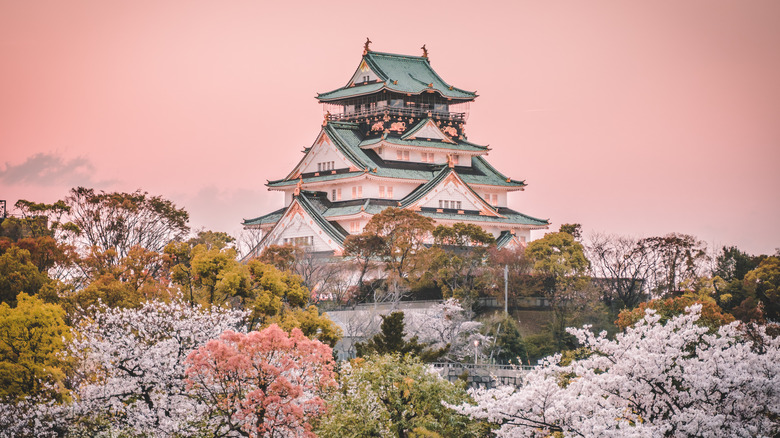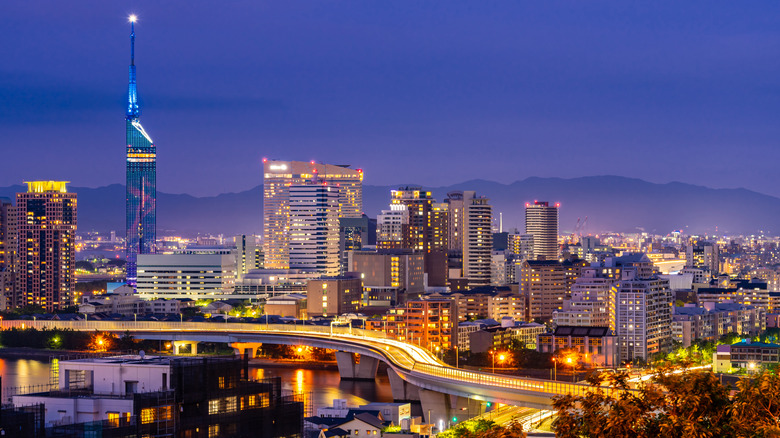How To Apply For A Student Visa In Japan
If a two-week vacation in Japan won't cut it, consider studying in Nihon instead. Whether you want to learn Nihongo (the Japanese language) or study at one of the country's acclaimed universities, we're going to help you make your dreams come true. Note that the information here applies to full U.S. citizens; check your local Japanese embassy website for more information.
First, let's clear up a few things about the student visa. U.S. citizens who are planning to study in Japan for less than 90 days do not need a visa (per Embassy of Japan in the United States of America). So, if you're only taking a short course in Japan, go ahead and book your plane tickets. If you're planning to study in Japan for 90 days or longer, you must apply for a visa. The shortest amount of time a visa can be issued is three months, and the longest is four years and three months (per the Ministry of Foreign Affairs Japan). The length of your visa will depend on the length of your course of study.
Your visa will come with several conditions, one of which is the possibility to work part-time in Japan while you're studying. You'll be permitted to work a maximum of 28 hours per week, with some restrictions on the type of work you can do (per Gaijin Pot). However, you must apply for a work permit in addition to your student visa, and your job must not interfere with your studies.
Applying for your visa
This is what you're here for, so let's get started. If you're applying independently, your first step is to find a course of study you want to do and submit your application there. This might seem a little backward, but the school or university that you apply to will issue you a Certificate of Eligibility (COE). The Embassy of Japan (U.S.) strongly recommends getting the COE before you apply for your visa. You can find information on how to do it here, but your school will also be able to guide you through the process. If you don't want to go through the COE application process independently, there are plenty of agencies that will take care of the whole process for you; Gaijin Pot is a well-known one.
Once you've got your COE in hand, you're ready to apply for the visa itself. The Embassy of Japan has a list of the required documents, which include your passport, application form, and a photograph. The processing time is five working days. You will also need to pay a fee, which ranges from ¥3,000–6,000 (per Fair Study in Japan). Now you're ready to book your flight: you must enter Japan within three months of the visa being issued, so don't delay.
Where to study in Japan
Here's the fun part: where in Japan are you going to go? From the enormous capital to the quiet wilds of Hokkaido, there's a place in Japan for everyone. The obvious choice, of course, is Tokyo. The neighborhoods of Tokyo are like a city within a city, each with its own distinct character, from the pop-culture wonderland of Akihabara to the more traditional Asakusa (per Go Tokyo).
However, the cost of living there might put a dampener on your yen for Japan: the University of Tokyo warns that the city is the most expensive place to live in the country, so if you're more budget conscious, consider studying elsewhere. Master Studies suggests the cities of Osaka and Kyoto as alternatives. Osaka, they say, is much friendlier than Tokyo, while Kyoto is a paradise for history lovers.
Coto Academy lists the southern island of Kyushu as the cheapest area of the country to live in, but don't think that living here would be a compromise. The largest city, Fukuoka, is thriving, while the natural landscape is one of volcanoes, hot springs, and magical forests that inspired the animations of Studio Ghibli. No matter where you end up in Japan, you'll have the experience of a lifetime, and you'll know that other cities are just a bullet train ride away.


